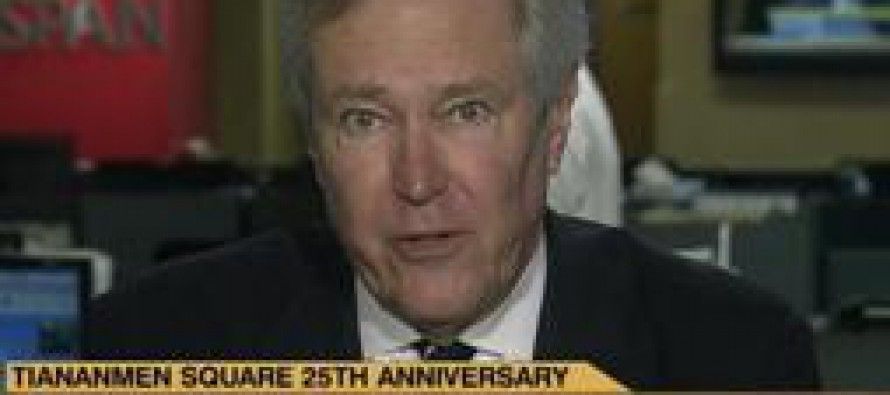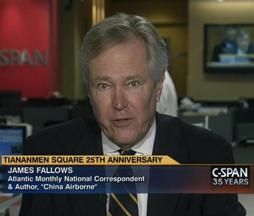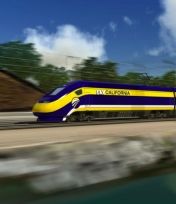Fallows cites CWD critique of his bullet-train stand

 The Atlantic’s James Fallows, to his credit, followed up on his post last week touting the California bullet train project with another post acknowledging the strong push-back he had received. His respectful, straightforward tone was far different than the norm in CA, where Jerry Brown blames “defeatists” for their opposition and ignores all the legit criticism of the project.
The Atlantic’s James Fallows, to his credit, followed up on his post last week touting the California bullet train project with another post acknowledging the strong push-back he had received. His respectful, straightforward tone was far different than the norm in CA, where Jerry Brown blames “defeatists” for their opposition and ignores all the legit criticism of the project.
Every big peacetime project that any democracy has ever undertaken has generated controversy.
In retrospect, both the Louisiana Purchase of 1803 and the Alaska Purchase of 1867 look like Heaven-sent, near-theft, no-brainer, “where would we possibly be without them?” steps in the development of American scale and might. But each met bitter opposition in its time. …
Obviously this history does not mean that just because a plan is divisive or unpopular, it will necessarily turn out to be a good idea. But it illustrates two instructive realities.
• The first, which is plain fact, is that big choices are rarely easy choices. Precisely because of their scale and impact, they involve tradeoffs, imperfections, pros and cons.
• The second, which is my opinion, is that big infrastructure investments are usually under-valued and over-criticized while in the planning stage. It’s much easier to envision the here-and-now costs and inconveniences, and harder to imagine fully the eventual benefits. That’s not true of all of them, but it’s how I read the preponderance of American-history evidence from the Louisiana Purchase onward.
‘Big decisions are more often 55-45 than 90-10’
More from Fallows:
For today, a survey of the opposition, which I will lay out as fairly as I can, saving responses for an upcoming post. Here’s why I’m happy to do so:
Even the most stalwart supporter of the original Medicare plan, or today’s Obamacare, had to know that there were uncertainties and drawbacks. Big decisions are more often 55-45 than 90-10. You have to weight the pros and cons, the knowns and unknowns. I think the pros still prevail in this case, but we have to look at the cons.
The main claims are:
• A high-speed rail system might be great in theory, but the realities of this plan fall far short.
• It will cost too much, take too long, use up too much land, go to the wrong places, and in the end won’t be fast or convenient enough to do that much good anyway. And, from some people,
• It’s an old-tech band-aid to a problem that really calls for a “disruptive”-tech fundamental solution, from self-driving cars to the Elon Musk-style hyperloop.
You can see a lot of the objections in one place in a dispatch conveniently titled “7 Ways James Fallows is Wrong About the CA Bullet Train.”
Yes, that’s a link to Cal Watchdog. I look very much forward to Fallows’ response to the piece’s specifics.
The toughest of all anti-bullet-train arguments
 The one argument against the bullet train that is the most rock-solid of all is the fact that what the state proposes isn’t a bullet train from San Francisco to Los Angeles. It’s a bullet train from San Jose to the northern edges of Los Angeles County, with regular rail completing the trip to the big cities on either end of the route.
The one argument against the bullet train that is the most rock-solid of all is the fact that what the state proposes isn’t a bullet train from San Francisco to Los Angeles. It’s a bullet train from San Jose to the northern edges of Los Angeles County, with regular rail completing the trip to the big cities on either end of the route.
That makes it profoundly less attractive, I would think, to even the most ardent of supporters. We’ll see how Fallows addresses it.
In the meantime, I was amused to see Fallows in his latest piece quote an unnamed California resident who wonders — like I do — if Jerry Brown isn’t actually trying to sabotage the project to prevent it from ever becoming a multibillion-dollar white elephant. The resident says building the first segment in the Central Valley …
… without connecting any major population center to any other, therefore seems like an investment with no hope of a return. In the meantime, the people already opposed to the system (which are particularly numerous in the Central Valley) will be joined by those opposed to government waste in general, who will point to a train that has already cost billions of dollars and still connects nowhere to nowhere, and say, “enough, pull the plug, this has been a waste of money.” Once that happens, the political realist in me has to acknowledge that there is no way promises of “but if we extended it further, it would actually work” would get any traction, and the idea would be dead. As I have remarked with my friends, only half-jokingly, if they wanted to kill the idea of high speed rail in California forever, they couldn’t have gone about it much better than this.
To this pessimistic political outlook, I could also add the accusations of mismanagement of the funds already spent, and the compromises that are watering down the project as it moves along (portions of the line are now not even going to be high-speed), but those are already documented by actual journalists. My main feeling, though, is that if they wanted this to work, they should have gone about it any other way than what they have.
Never forget that when Sacramento Superior Court Judge Michael Kenny ordered a “remedies hearing” at which the state of California was to respond to his finding that the bullet train had serious legal deficiencies, the state responded with a filing that identified no remedies. Instead, it said the project could proceed using federal funds, which weren’t subject to state law.
That is either mystifyingly inept lawyering or self-sabotage.
Related Articles
Has CA ranch found cheap route to carbon containment? Maybe
If a recent San Francisco Chronicle story is right, the problem posed by carbon and other greenhouse gases accumulating in
Sen. Blakeslee backs publisher whose kids were taken
Karen Velie is the co-founder and publisher of CalCoastNews.com. While in the process of working through the San Luis Obispo County
Bankruptcy Bill Violates Rule
Katy Grimes: News comes from the Senate today that AB 155, the union-backed bill preventing cities and municipalities from filing




